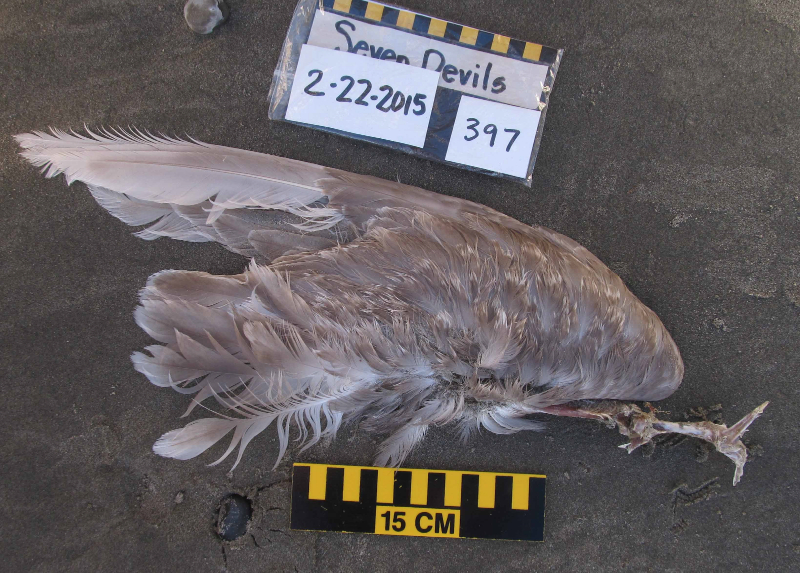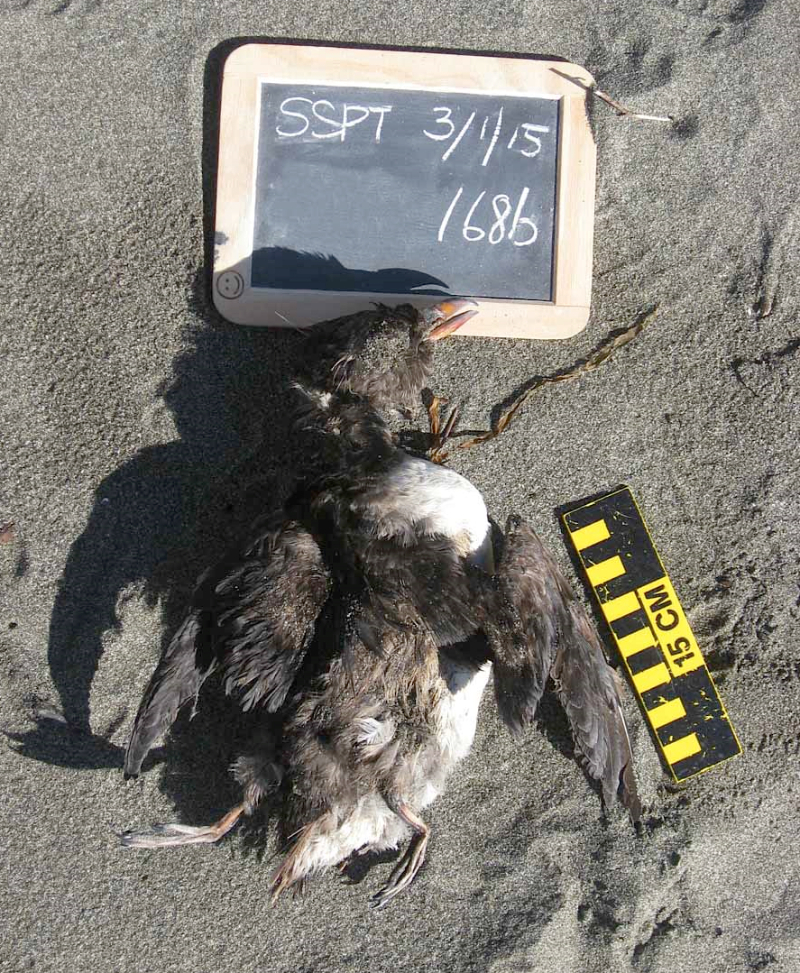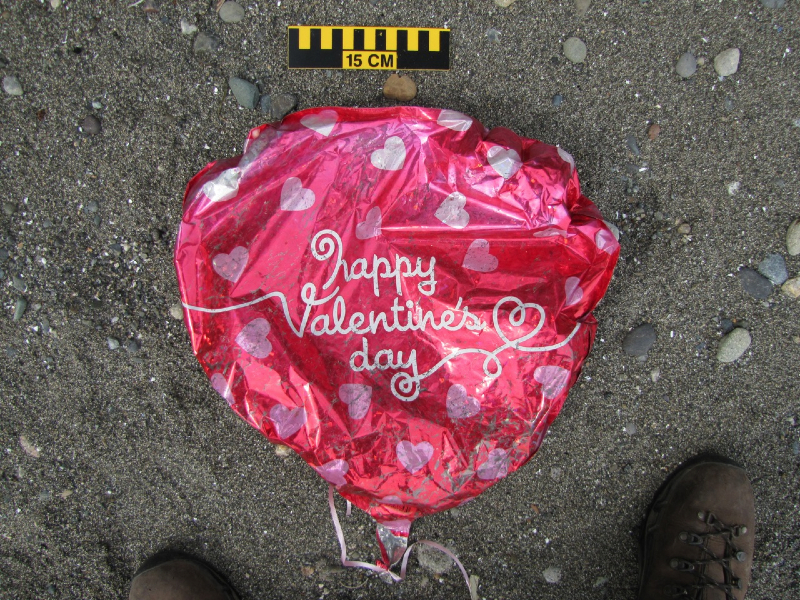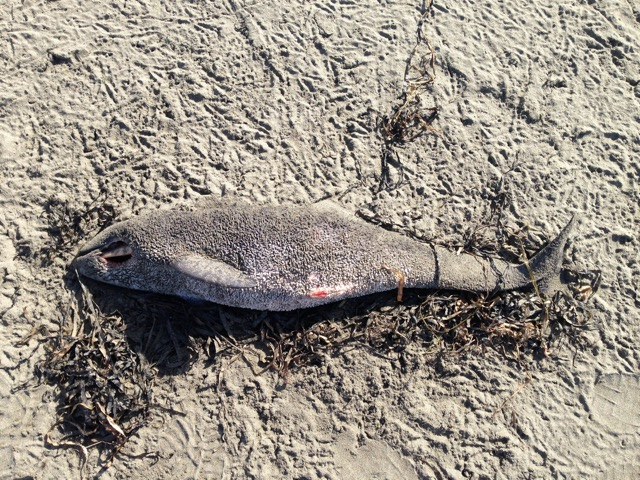Hope you’re all enjoying some sunshine on your beaches this month. It’s been a busy few weeks at COASST.
Since our last update, we’ve held trainings and events in all four COASST states (Alaska, Washington, Oregon, and California), catching up with many COASSTers both near and far. COASST staff also attended the inaugural Citizen Science Association conference, the Pacific Seabird Group annual meeting, and the Alaska Forum on the Environment. Additionally, we hosted two COASST Advisory Board meetings, with lots of interaction between our advisors (arriving all the from as far away as New York!) and principal investigators for special projects.The COASST interns have been extra busy this quarter, preparing for trainings, working on thenew marine debris module, and entering data on many, many Cassin’s Auklets. After finals next week, they’re ready for a well-deserved spring break.Speaking of hard work, thank you to all of you for your help this month! We couldn’t do it without you, and we look forward to seeing your next datasheets and photos.Let’s take a look at What’s Washed In recently:
 Seven Devils Wayside (OR) 2/22/15 found by Karen
Wing: 41 cm
Alaska Wing Key– page 44
Q1 – choose “mottled mantle, brown, gray or white (go to Q29)
Q29 – choose “mottling throughout mantle (go to Q30)
Q30 – with this wing chord measurement we’re left with:
-female eiders (WF21, WF23, WF25, WF27)
-Large Immature Gull (LA4)
Only one of these options allows for a wing chord of 41cm – Large Immature Gull – correct!
West Coast Wing Key – page 33
Q1 – choose “mantle with variable mottling: brown, gray or white” (go to Q14)
Q14 – choose “mottling throughout mantle” (go to Q15)
Q15 – with this wing chord measurement, we’re left with:
-Large Immature Gull (LA3)
-Canada Goose (WF19)
-Caspian Tern (LA19)
-Snow Goose (rare)
-Greater White-fronted Goose (rare)
Wing tips of this bird are pale – not black or dark brown, per CATE and CAGO – Large Immature Gull it is!
West Coast Wing Table – page 32
Choose row, “Extra large, wing chord 33-43cm”
Choose column, “mottled brown mantle”
At this intersection, we’re presented with:
Large Immature Gull (LIGU, LA3)
South Polar Skua (SPSK, LA29)
Pomarine Jaeger (POJA, LA27)
Heermann’s Gull-juvenile (HEER, LA21)
Of these, HEER and POJA are shorter than 41cm, and SPSK has a bright white patch at the base of the primaries – Large Immature Gull is the only one left!
Seven Devils Wayside (OR) 2/22/15 found by Karen
Wing: 41 cm
Alaska Wing Key– page 44
Q1 – choose “mottled mantle, brown, gray or white (go to Q29)
Q29 – choose “mottling throughout mantle (go to Q30)
Q30 – with this wing chord measurement we’re left with:
-female eiders (WF21, WF23, WF25, WF27)
-Large Immature Gull (LA4)
Only one of these options allows for a wing chord of 41cm – Large Immature Gull – correct!
West Coast Wing Key – page 33
Q1 – choose “mantle with variable mottling: brown, gray or white” (go to Q14)
Q14 – choose “mottling throughout mantle” (go to Q15)
Q15 – with this wing chord measurement, we’re left with:
-Large Immature Gull (LA3)
-Canada Goose (WF19)
-Caspian Tern (LA19)
-Snow Goose (rare)
-Greater White-fronted Goose (rare)
Wing tips of this bird are pale – not black or dark brown, per CATE and CAGO – Large Immature Gull it is!
West Coast Wing Table – page 32
Choose row, “Extra large, wing chord 33-43cm”
Choose column, “mottled brown mantle”
At this intersection, we’re presented with:
Large Immature Gull (LIGU, LA3)
South Polar Skua (SPSK, LA29)
Pomarine Jaeger (POJA, LA27)
Heermann’s Gull-juvenile (HEER, LA21)
Of these, HEER and POJA are shorter than 41cm, and SPSK has a bright white patch at the base of the primaries – Large Immature Gull is the only one left!
 South Spit (CA) 3/1/15 found by Don and Grace
Bill: 32 mm
Wing: 17 cm
Tarsus: 29 mm
Alaska Foot Key – page 34
West Coast Foot Key – page 22
Choose webbed (go to Q2), choose completely webbed (go to Q3), choose three toes: all webbed (go to Q4), choose foot not huge – STOP: Alcids.
Alaska Guide
On AL1 veer left – wing chord is more than 15cm. Bill is orange, with a different colored base – select “yellow-to-dark orange, w/ grooves or horn,” and proceed to these three species pages:
Tufted Puffin (AL9)
Horned Puffin (AL11)
Rhinoceros Auklet (AL13)
Bill is way too small for either the Tufted Puffin or Horned Puffin – Rhinoceros Auklet!
West Coast Guide
On AL1 veer left – wing chord is more than 15cm. Bill is orange, with a different colored base – select “yellow-to-dark orange, w/ grooves or horn (or in the earlier edition: orange with distinct grooves, horn or bump)”. We’re left with the “true puffins:”
Rhinoceros Auklet (AL6)
Tufted Puffin (AL12)
(Horned Puffin, AL12 – some guides have TUPU and HOPU combined)
Bill is way too small for either the Tufted Puffin or Horned Puffin – Rhinoceros Auklet!
South Spit (CA) 3/1/15 found by Don and Grace
Bill: 32 mm
Wing: 17 cm
Tarsus: 29 mm
Alaska Foot Key – page 34
West Coast Foot Key – page 22
Choose webbed (go to Q2), choose completely webbed (go to Q3), choose three toes: all webbed (go to Q4), choose foot not huge – STOP: Alcids.
Alaska Guide
On AL1 veer left – wing chord is more than 15cm. Bill is orange, with a different colored base – select “yellow-to-dark orange, w/ grooves or horn,” and proceed to these three species pages:
Tufted Puffin (AL9)
Horned Puffin (AL11)
Rhinoceros Auklet (AL13)
Bill is way too small for either the Tufted Puffin or Horned Puffin – Rhinoceros Auklet!
West Coast Guide
On AL1 veer left – wing chord is more than 15cm. Bill is orange, with a different colored base – select “yellow-to-dark orange, w/ grooves or horn (or in the earlier edition: orange with distinct grooves, horn or bump)”. We’re left with the “true puffins:”
Rhinoceros Auklet (AL6)
Tufted Puffin (AL12)
(Horned Puffin, AL12 – some guides have TUPU and HOPU combined)
Bill is way too small for either the Tufted Puffin or Horned Puffin – Rhinoceros Auklet!
 Wishing all of you a happy (belated) Valentines Day! This ballon was found by Jeff Adams way back in April of 2013.
Ballons are commonly ingested by marine life like sea turtles because they are similar in size and movement (“floppy”) to the jellyfish they eat. With the ultimate goal of preventing these and other impacts of marine debris, COASST’s efforts will quantify and help identify the sources of objects, like balloons, that are mistaken for prey.
Wishing all of you a happy (belated) Valentines Day! This ballon was found by Jeff Adams way back in April of 2013.
Ballons are commonly ingested by marine life like sea turtles because they are similar in size and movement (“floppy”) to the jellyfish they eat. With the ultimate goal of preventing these and other impacts of marine debris, COASST’s efforts will quantify and help identify the sources of objects, like balloons, that are mistaken for prey.
 This Harbor Porpoise was found washed up by COASSTers in Humboldt. Commonly seen in coastal waters of the Pacific Ocean, the porpoise is the smallest of the cetacean family, which also includes whales and dolphins. While they tend to be independent feeders, they can sometimes be spotted in groups of 4-6 searching for food along the surface of the water. Also commonly seen is the Dall’s porpoise, which is slightly larger and has black coloration with white oval markings on their sides and bellies.
Seen something on the beach you’ve always wondered about? Send us a photo!
This Harbor Porpoise was found washed up by COASSTers in Humboldt. Commonly seen in coastal waters of the Pacific Ocean, the porpoise is the smallest of the cetacean family, which also includes whales and dolphins. While they tend to be independent feeders, they can sometimes be spotted in groups of 4-6 searching for food along the surface of the water. Also commonly seen is the Dall’s porpoise, which is slightly larger and has black coloration with white oval markings on their sides and bellies.
Seen something on the beach you’ve always wondered about? Send us a photo!
